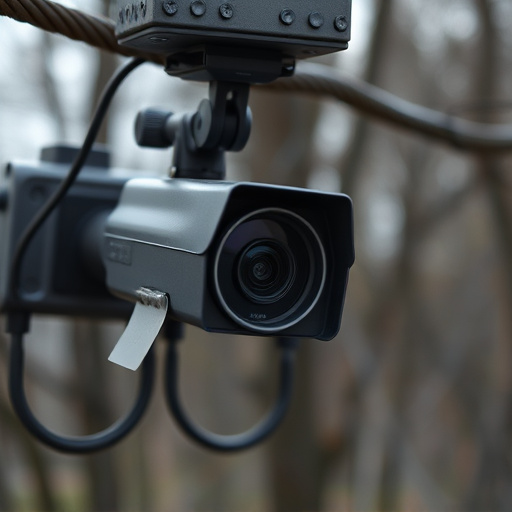Setting up a wireless hidden camera network for home protection requires selecting disguised cameras that blend seamlessly into surroundings. Assess space needs, choose suitable camera types (e.g., smoke detector or plant-based), and configure individual settings via user-friendly interfaces. Thoroughly integrate and test the system to ensure optimal performance, secure storage of footage, and reliable monitoring using disguised cameras for home protection.
Securing your home has never been easier with the power of disguised cameras. This comprehensive guide walks you through setting up a wireless hidden camera network, offering optimal protection for your space. From selecting robust and unnoticeable cameras to configuring a reliable wireless network and individual camera settings, we cover it all. Learn how to integrate and test your security system effectively, ensuring peace of mind with enhanced home surveillance using these advanced technologies.
- Choosing Disguised Cameras for Optimal Protection
- Setting Up the Wireless Network Infrastructure
- Configuring Each Hidden Camera Individually
- Integrating and Testing the Security System
Choosing Disguised Cameras for Optimal Protection
When setting up a wireless hidden camera network for home protection, selecting disguised cameras is crucial. These cameras offer an advantage in maintaining a discreet presence, allowing for effective surveillance without raising suspicion. Disguised cameras come in various forms, from mimicry of everyday objects like smoke detectors or light bulbs to more creative designs like fake rocks or potted plants.
Choosing the right type depends on your specific needs and the areas you wish to monitor. For instance, a hidden camera disguised as a smoke detector is ideal for capturing footage without drawing attention to itself in high-traffic areas like hallways or kitchens. Alternatively, a plant-based camera can provide subtle surveillance in outdoor settings, seamlessly integrating into your landscaping while keeping an eye on your property.
Setting Up the Wireless Network Infrastructure
Setting up a wireless hidden camera network is an essential step in establishing a robust security system for your home, especially when employing disguised cameras for protection. The first step involves creating a reliable wireless network infrastructure. Start by assessing your home’s layout to determine the ideal placement of access points or routers to ensure comprehensive coverage without dead zones. These devices act as the backbone of your network, enabling seamless communication between all connected devices, including hidden cameras.
Opt for high-speed internet connections and modern routers that support the latest wireless standards, such as Wi-Fi 6, to accommodate the data-intensive nature of video surveillance. Once your network infrastructure is in place, you can begin configuring individual camera settings, ensuring they seamlessly integrate into your wireless network for optimal performance and real-time monitoring capabilities.
Configuring Each Hidden Camera Individually
Each hidden camera in a wireless network setup should be configured individually, allowing for tailored security solutions. This process involves setting up each camera’s unique parameters, including resolution, field of view, and motion detection sensitivity. Disguised cameras for home protection come with user-friendly interfaces that enable you to adjust these settings seamlessly.
By configuring each camera separately, you can ensure optimal performance based on their strategic placement around your home. This customization means capturing clear footage in every corner, enhancing your home protection through comprehensive surveillance. Whether they’re disguised as everyday objects or sleekly integrated into decor, these cameras offer a level of security tailored to your specific needs.
Integrating and Testing the Security System
After setting up your network of wireless hidden cameras, it’s crucial to integrate and test your security system thoroughly. This involves ensuring seamless communication between all devices, checking video feed quality, and verifying that alerts are triggered accurately. Start by configuring each camera’s settings, such as resolution, recording quality, and motion detection sensitivity, through the central control panel or app.
Next, conduct a series of tests to mimic real-world scenarios. Check the system’s responsiveness during potential security events like motions, sounds, or door openings. Verify that alerts are received promptly on your smartphone or notification device. Ensure that video feeds from each camera can be accessed simultaneously and that the recorded footage is stored securely in the cloud or on local storage devices. By thoroughly testing your system, you’ll guarantee that your disguised cameras for home protection provide reliable and effective monitoring.
Setting up a wireless hidden camera network is a comprehensive process that requires careful consideration. By choosing disguised cameras tailored for home protection, you can create a robust security system. The article has guided you through essential steps, from establishing a reliable wireless network infrastructure to configuring each camera individually and integrating the system for optimal testing. With these steps, you’re well-equipped to enhance your home’s security discreetly and effectively using modern technology.
